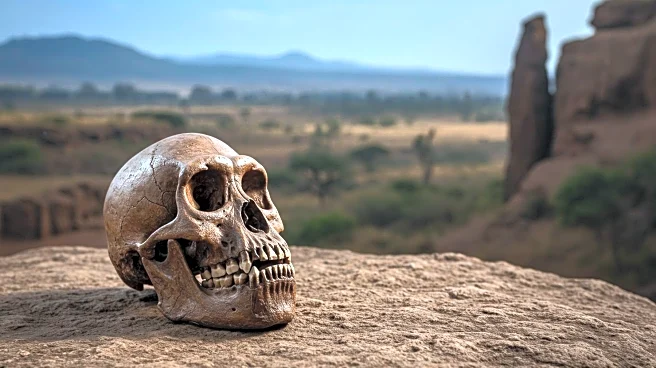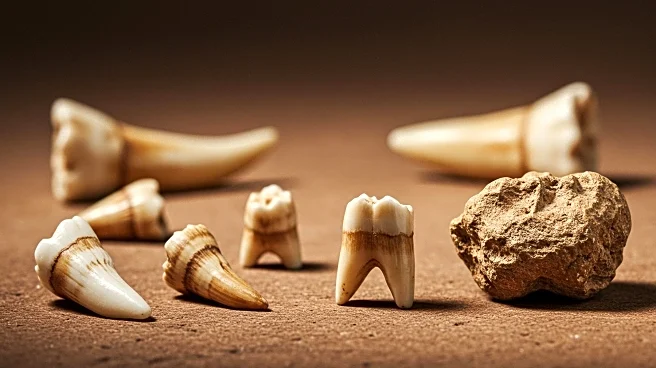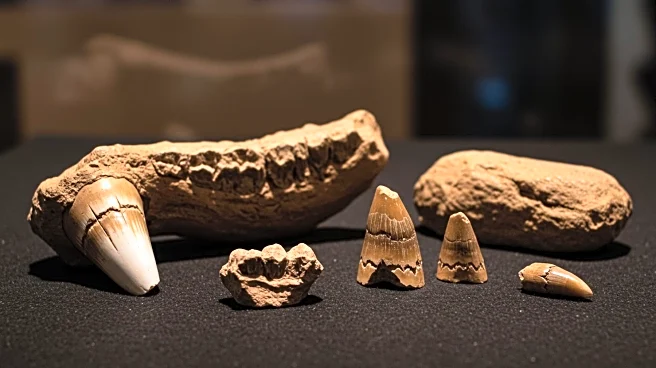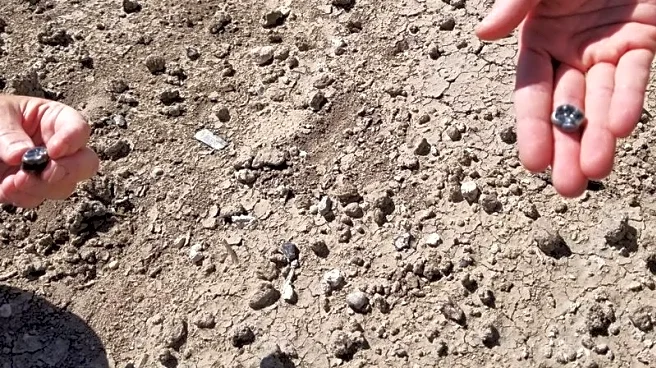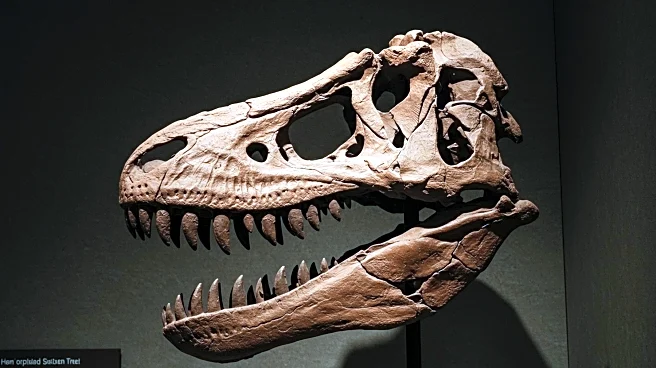What's Happening?
A recent study has uncovered fossilized teeth at the Ledi-Geraru site in Ethiopia, suggesting the presence of a previously unknown species of Australopithecus. These teeth, dating back approximately 2.6 million years, do not match any known species within the genus, indicating the possibility of a new species. Additionally, the site has yielded extremely old teeth from the Homo genus, potentially belonging to the oldest known Homo species. This discovery highlights the coexistence of multiple hominin species in the region around 2.6 million years ago, including Homo, Australopithecus, and A. garhi.
Why It's Important?
The findings at Ledi-Geraru provide significant insights into human evolution, suggesting a complex interaction between different hominin species. The coexistence of multiple species in the same region challenges previous assumptions about hominin evolution and migration patterns. This discovery could reshape our understanding of early human relatives and their adaptation strategies, offering new perspectives on the evolutionary tree of humans.
What's Next?
Researchers are now focusing on studying the enamel of the newfound teeth to understand the dietary habits of these hominins. This analysis may reveal whether these species competed for similar resources. Further excavations at the site are expected to uncover more fossils, contributing to the puzzle of human evolution.
Beyond the Headlines
The discovery raises questions about the preservation of remains due to volcanic activity, which may have contributed to the rich fossil record in the area. The evolutionary 'bushy' tree concept is reinforced, indicating multiple species existed simultaneously, rather than a linear progression.
